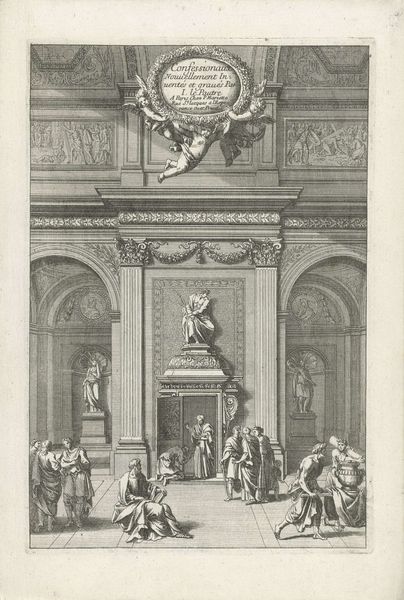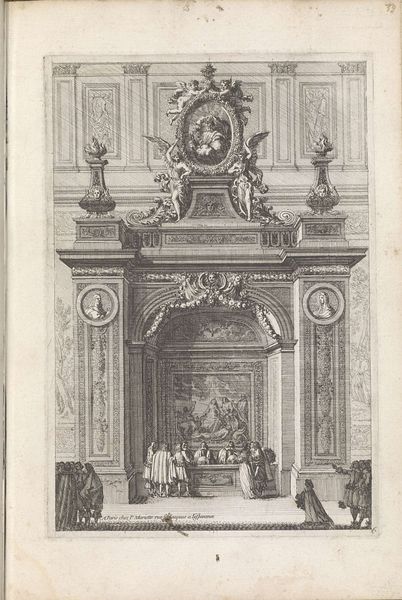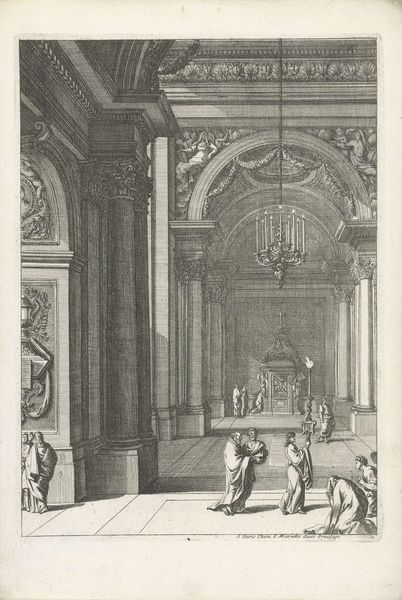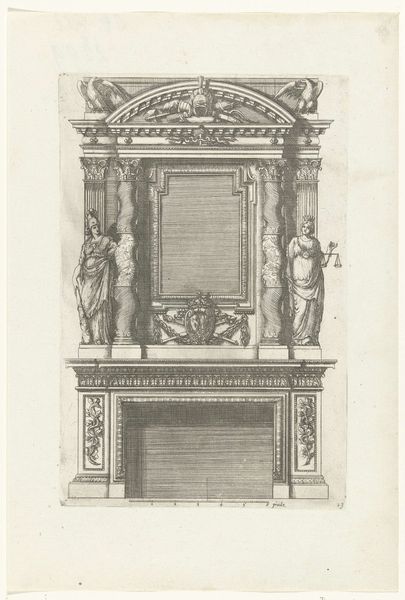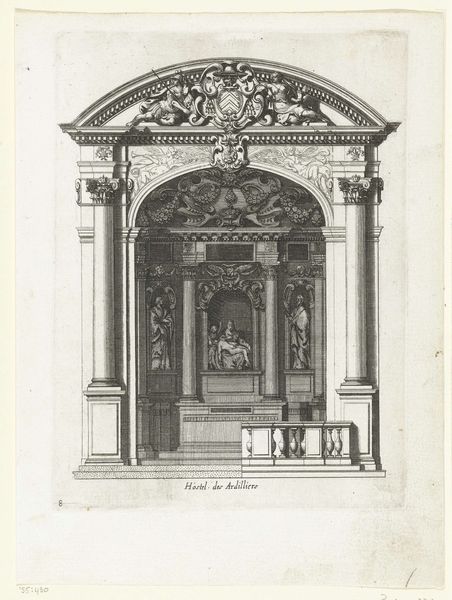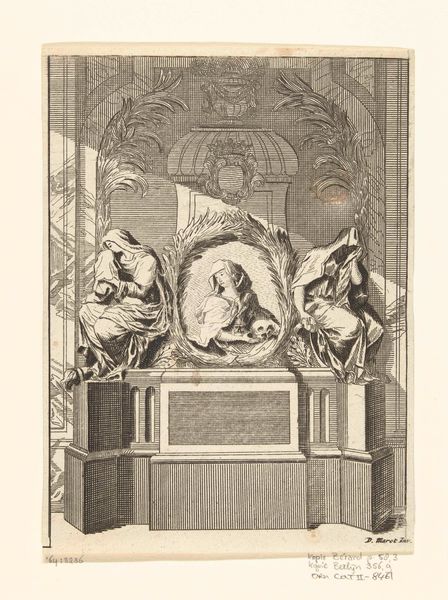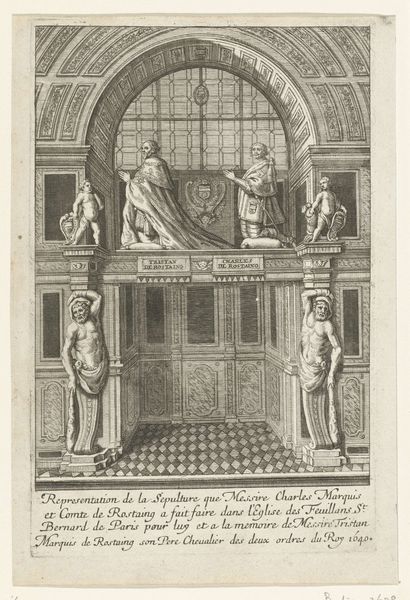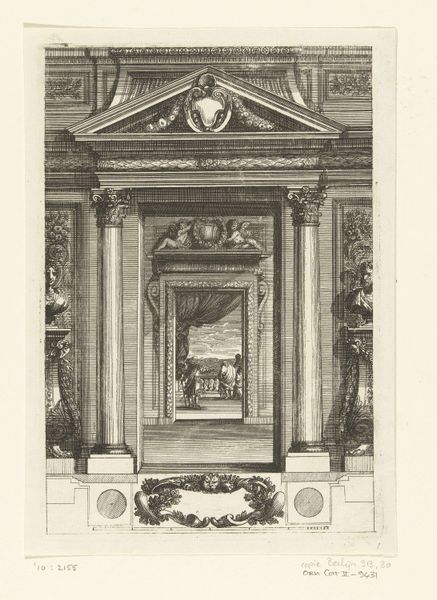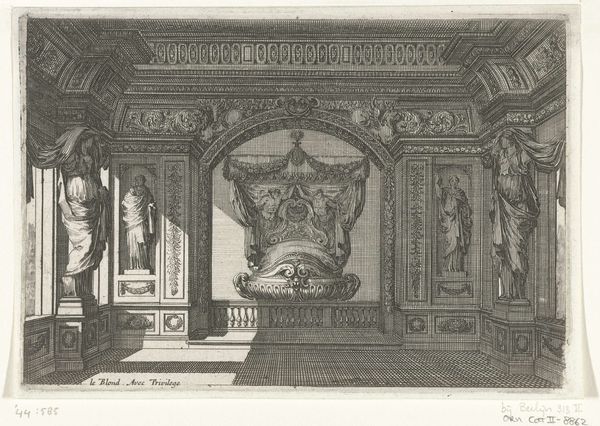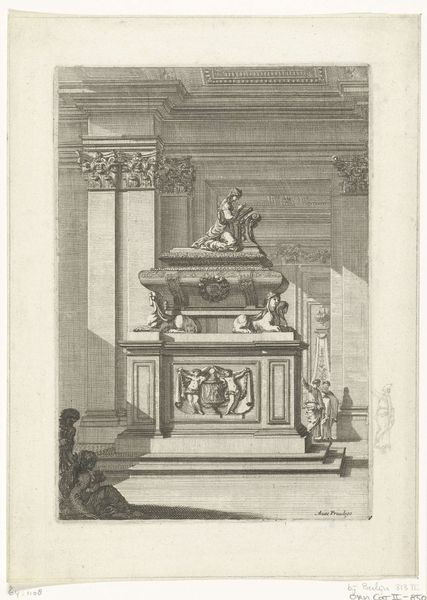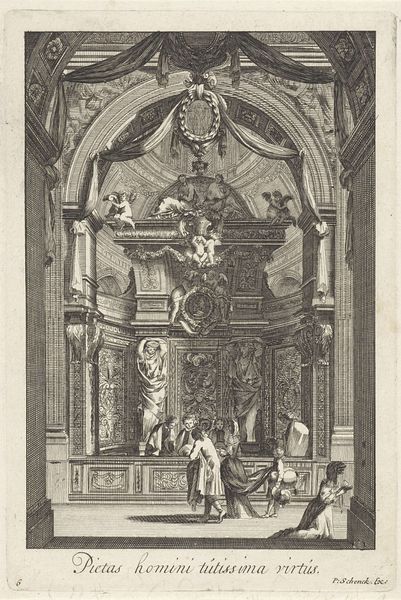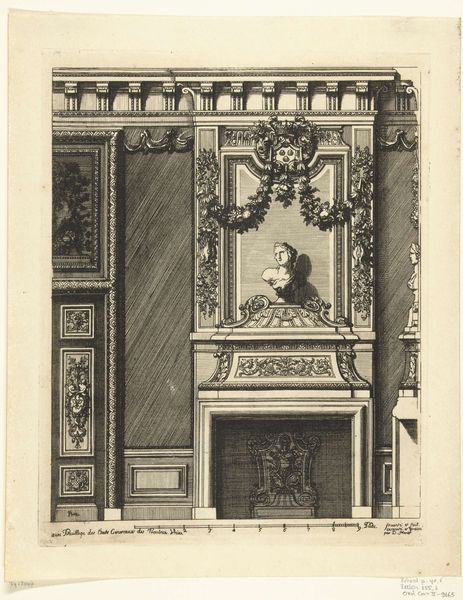
print, engraving, architecture
#
baroque
# print
#
figuration
#
form
#
line
#
history-painting
#
engraving
#
architecture
#
realism
Dimensions: height 243 mm, width 177 mm
Copyright: Rijks Museum: Open Domain
Curator: There's such stark beauty in this engraving by Jean Le Pautre, titled "Confessional in a Niche," created somewhere between 1658 and 1670. Editor: Intricate, almost claustrophobic. The precise linework contrasts oddly with the vulnerability implied by the act of confession itself. I wonder about the intended emotional weight. Curator: It really emphasizes the social power structures present at that time. The architecture is imposing, monumental, literally framing the interaction between the confessor and the penitent. This engraving freezes a moment laden with cultural expectations. The space seems to dictate behavior. Editor: And note the recurring motif of the cross throughout the composition: from the small cross right above the confession box to the cross shapes implied by the floor pattern. Beyond faith, the cross might be functioning almost like a brand here, projecting authority. The composition leaves little room for any alternate reading or challenge. Curator: Interesting point. We have to remember that Le Pautre was known for his architectural prints and ornamental designs. So the precision of lines and detailing of the structure would appeal to potential patrons looking to build or decorate. Editor: It certainly communicates the baroque sensibility. The scene isn't just about religious devotion; it's also selling an aesthetic, reinforcing specific societal norms of faith, submission, and decorum in one elaborate package. And that makes you wonder what unspoken forces may be at play here. Curator: This print acts as a silent document, freezing in time the architecture, attire, and most subtly, the prescribed behaviours that reinforce its power. Editor: Exactly. And by documenting that very rigidity, Le Pautre's engraving invites us to consider the ever-evolving politics of repentance itself.
Comments
No comments
Be the first to comment and join the conversation on the ultimate creative platform.

